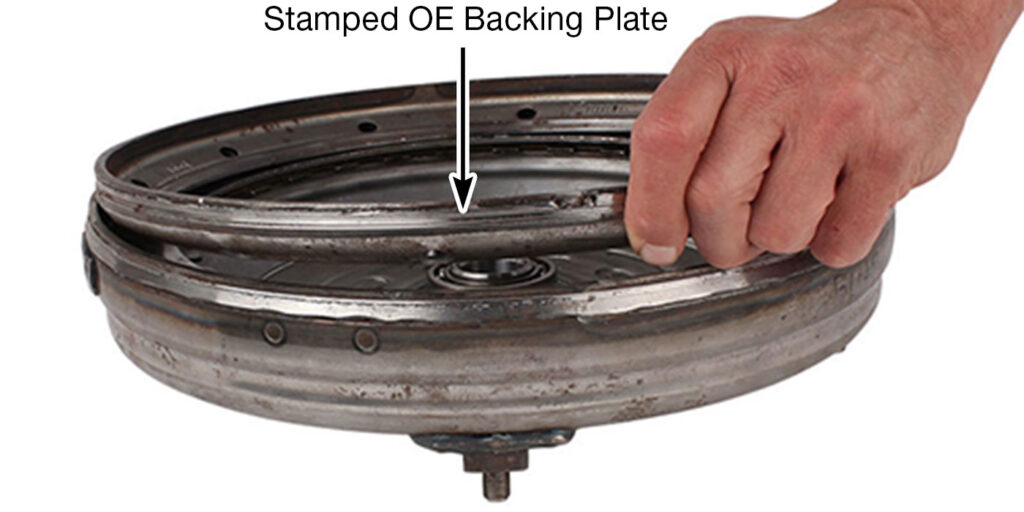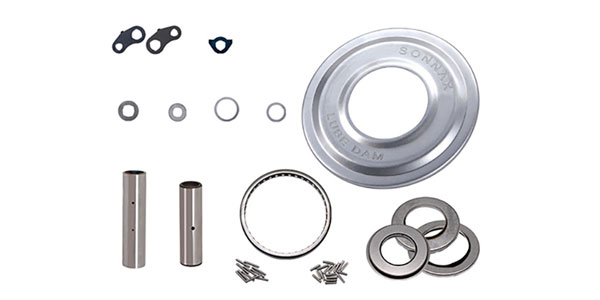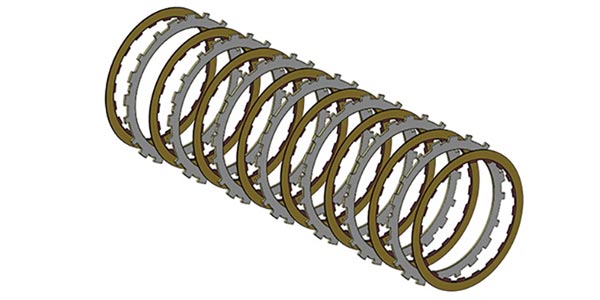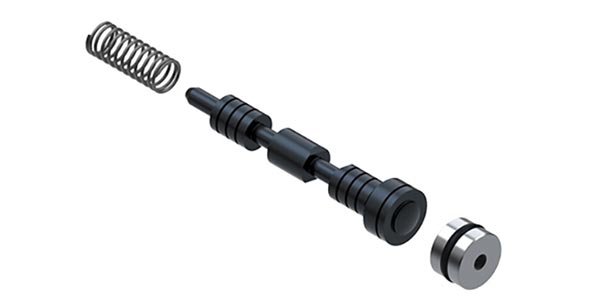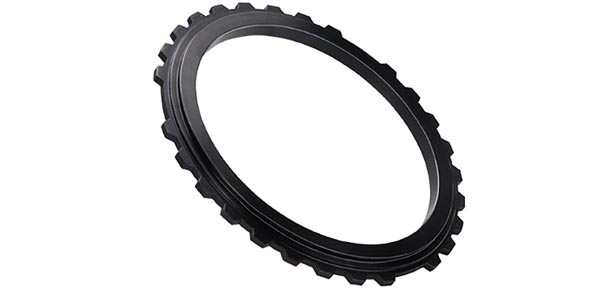The Ford 6R140 was introduced in 2010 (for 2011 model year trucks) as a six-speed used in Super Duty gas- and diesel-powered applications. Today, these units are in high-value, hard-working trucks at the peak of the repair cycle. Aftermarket programming (especially with the diesel variants) is pulling additional power from the engines, putting further loads to the downstream torque converter and drivetrain components. Fleets, businesses and individuals work these trucks hard and will spend the money needed to fix them correctly.
This article will cover some of the unique 6R140 features from previous TASC Force Tips, plus some pitfalls that transmission rebuilders can look out for as they select a converter to use with their rebuild.
The first thing you will notice about the converter is the size and weight. The converter hits the scales at approximately 70 pounds dry. After that, you will notice that the impeller hub is large, thin-walled and has splines at two locations: the leading edge of the O.D. and the base of the I.D. of the hub. O.D. splines run the transmission pump while the I.D. splines engage the PTO system. Look for damage on both the outside and inside (it’s a sealing surface, too) of the impeller hub, and always replace the drawn cup needle bearing in the transmission pump during rebuild. This is also a captive clutch type of converter, and to gain access to the friction elements in the unit, a converter rebuilder has the additional step of cutting out the contoured stamped backing plate (Figure 1, above).
It’s accurate to say, in both size and design, that the 6R140 presents a formidable challenge to converter rebuilders. Sonnax and other converter component suppliers have responded with a variety of components and kits that make it easier to rebuild the unit while increasing capacity and durability.
Besides having a variety of captive components inside the converter, the way the 6R140 converter clutch applies is also unique. In most other converters, the friction element reacts against the inside surface of a stamped steel OE front cover. That’s why forged covers are beneficial to so many converters: the surface that the clutch rides against is a stamped steel, prone to flexing and warping that causes premature clutch failure.
With the Chrysler 48RE converter, for example, you know you need a forged cover if the unit is subject to any kind of stress. But the 6R140 is different. The clutch plate reacts against a separate backing plate in the converter, and the converter clutch never touches the front cover.
Before you decide to spend for a 6R140 converter that has been modified with a forged billet cover, make sure it will actually provide some benefit. Again, it’s worth noting that there are parts and kits available to converter builders that will provide a rigid, forged surface for the clutch plate to ride against the forged cover. But these aftermarket forged components aren’t something you can see once the converter has been rebuilt and welded back together, so you end up with a converter that’s “forged on the inside.” This can be a challenge.
Transmission shops will also notice that there are 4-stud, 6-stud and 8-stud versions of this converter (seen in Figures 2 & 3).
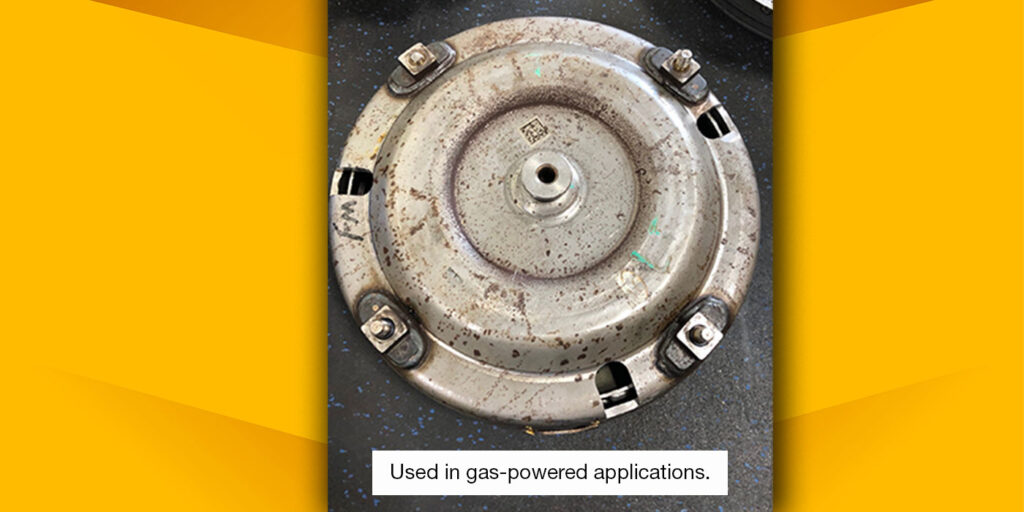
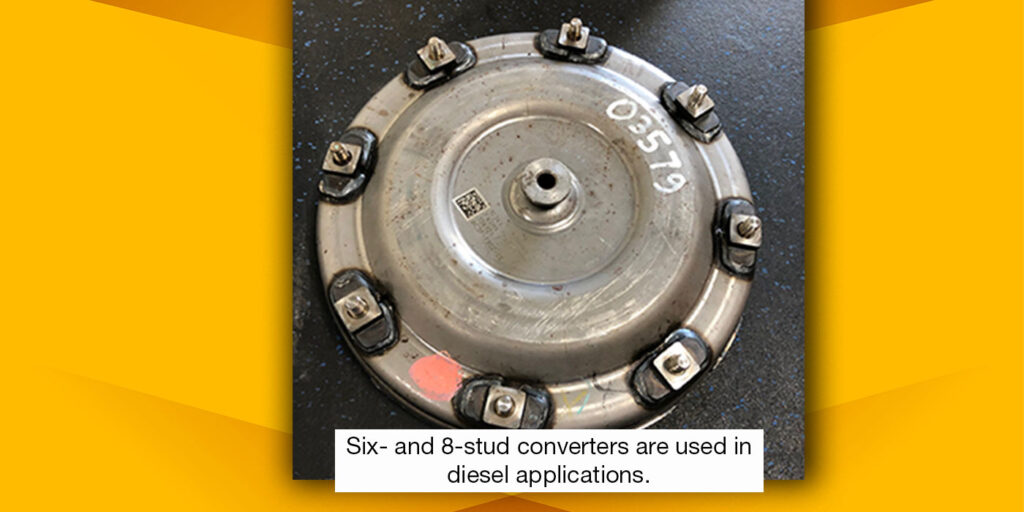
The 4-stud version is a higher stall/K factor used in the lower-torque-rated gas engines. The 6- and 8-stud versions both come in diesel applications, and there has been some confusion around these.
Other than the difference in stud count, the 6- and 8-stud versions are identical internally. When cutting the 6- or 8-stud units apart, they both have the large clutch apply piston (seen in Figure 4).
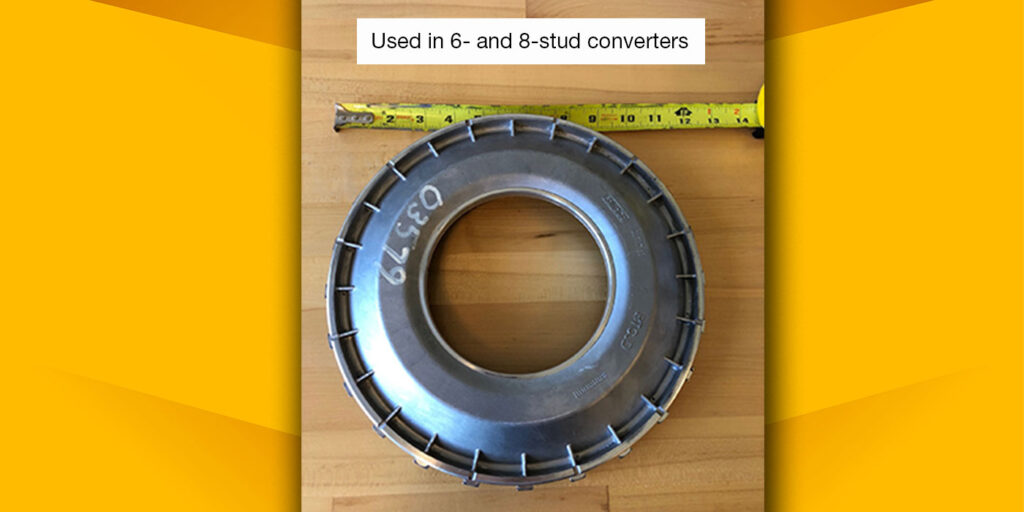
The problem for a transmission shop is that, if it orders a reman converter from its supplier (in advance of them removing the transmission), they won’t know whether a 6- or 8-stud unit will be sent. And because the flex plates are specific to the stud count on the cover, the converters are not interchangeable without changing the flex plate.
Sometimes a transmission shop will mistakenly decide to install a 4-stud converter after removing an 8-stud unit. They have a 4-stud converter in stock and can see that a 4-stud unit will bolt up. (Every other hole in the flex plate will be blank). But what the shop does not know is that the piston in the 4-stud converter (Figure 5) has a much smaller apply area than the piston in the 6- and 8-stud units.
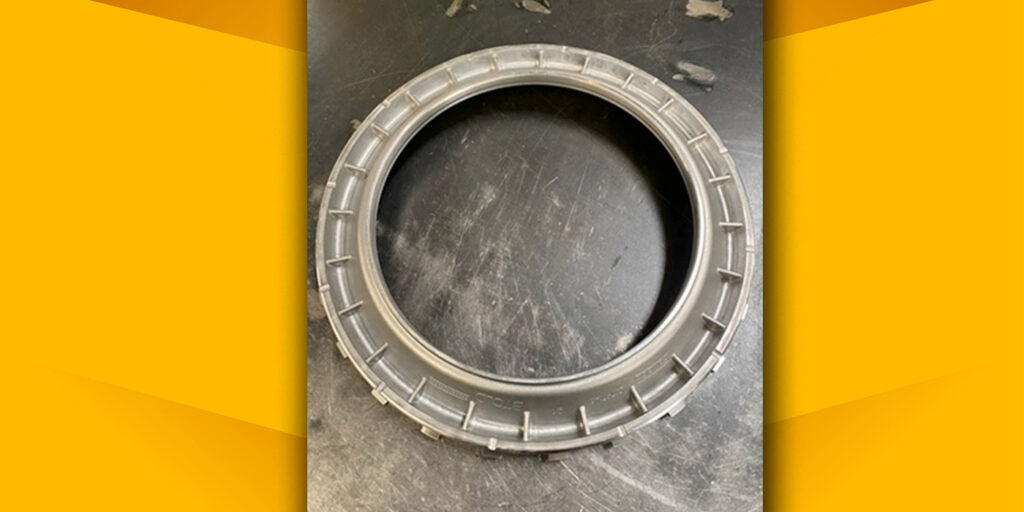
So, they install the 4-stud converter and test drive the truck. The stall speed isn’t quite right, but it’s not terrible. The converter locks up sufficiently, and they deliver the truck to the customer. However, the first time the converter clutch is tasked with some heavy pulling or aggressive driving, it fails due to the lack of apply pressure from the small piston.
You can only install a 4-stud converter in a vehicle that had a 4-stud to begin with. A 4-stud converter may fit in a diesel with an 8-stud flex plate, but the converter clutch will soon fail in use.
In conclusion, the converter in the 6R140 is a hefty unit that presents challenges to both transmission and converter rebuilders. There are great upgrades available to converter rebuilders that will fortify the converter for additional capacity and durability, but transmission shops shouldn’t necessarily be looking for a converter with a billet cover as proof that it’s been upgraded. And critically, know when you can — and cannot — interchange the 4-, 6- and 8-stud variants of this converter. Having this knowledge up front will help ensure that transmission builders sell the correct upgraded components for rebuilding a customer’s hard-working transmission and converter.
Steve Jaussaud is the Sonnax torque converter product line manager. He is a member of the Sonnax TASC Force (Technical Automotive Specialties Committee), a group of industry technical specialists, transmission rebuilders and Sonnax technicians.

